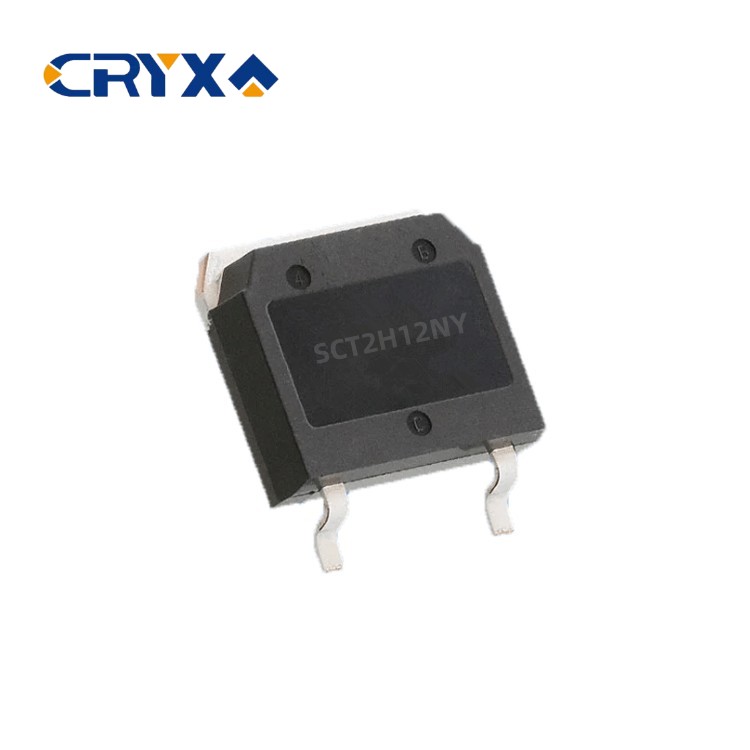As the demand for bandwidth continues to grow and the existing radio spectrum becomes crowded, the telecommunications industry is looking for new technologies to meet the needs of future mobile communications. The pursuit of more bandwidth is inextricably linked to the use of higher radio frequencies, and higher operating frequencies mean more available bandwidth.
Researchers predict that
GaN based technology will play an important role in the lower millimeter wave portion of the RF spectrum (i.e. below 50GHz) when studying new III-V group materials such as indium phosphide for frequencies above 100GHz. Because of this, GaN is expected to serve the next generation 5G network and may serve early versions of 6G.
GaN technology attributes its potential for RF/lower millimeter wave communication to its outstanding physical characteristics: high current density, high electron mobility and high breakdown voltage. Due to its high mobility, this technology can handle higher switching frequencies than current silicon based technologies.
In addition to speed, GaN based technology is also highly praised for its power processing ability, which enables it to provide high output power with good energy efficiency. These characteristics can make GaN a highly attractive technology for power amplifiers (PAs) located in next-generation mobile phones and small base station front-end modules. These front-end modules send or receive RF signals to or from the antenna. Compared to traditional Si or SiGe based technologies, the higher power processing capability of GaN translates into a higher transmission range and/or fewer components required to drive the antenna.
Reducing overall size and cost: towards a feasible silicon based gallium nitride technology platform
In order to be suitable for use as a PA in user equipment and small base stations, the cost and shape factors of the equipment are as important as their electrical characteristics. As mentioned earlier, due to the inherent characteristics of this technology, GaN helps to reduce the overall size of the front-end module. But to achieve a highly scalable overall size, it is necessary to integrate various components of RF front-end technology. To help achieve this goal, IMEC is adjusting its GaN on Si technology platform to RF applications as part of its Advanced RF program.
For cost saving reasons, Imec chose GaN on Si instead of GaN on SiC: not only is Si substrate cheaper, but it is also compatible with CMOS technology to achieve large-scale manufacturability. The GaN on Si technology was originally developed for power electronics applications, envisioned for power conversion in battery chargers, computers, servers, cars, lighting systems, and photovoltaic devices. However, multiple technological innovations are needed to make GaN on Si suitable for mobile RF applications. Parasitic effects within the device structure must be suppressed as much as possible to achieve high frequencies. Examples of these efforts include reducing source access resistance by developing technology modules with elevated source/drain electrodes and reducing parasitic capacitance associated with gates. Further reduction of gate length is needed to optimize devices for higher operating frequencies. This is conducive to higher fT and f max, which is a measure of the proper velocity of the equipment. In addition, the buffer layer must be compatible with RF to minimize RF substrate loss.

The GaN on Si process flow of Imec for RF starts from the organometallic chemistry vapor deposition growth of epitaxial structures on 200 mm silicon wafers. The epitaxial structure consists of a proprietary GaN/AlGaN buffer structure, GaN channels, AlN interlayer, and AlGaN barrier. The GaN HEMT device with TiN Schottky metal gate is subsequently integrated with the low-temperature three-level Cu backend process.
As demonstrated at the International Conference on Electronic Devices (IEDM 2020) in 2020, Imec researchers used this CMOS compatible platform to manufacture GaN HEMTs. The optimization of gate metal stacking, contact resistance, and gate length scaled proportionally to 110nm resulted in the device‘s fmax reaching 135GHz, which represents a step towards millimeter wave applications.
The key quality factors of PA are the output power and efficiency that transistors can provide. We achieved competitive results on IMEC‘s GaN on Si platform for 0.19 μ The gate length (LG) device of m is at 6GHz. These results will be presented at the European Microwave Week 2022.
The performance of IMEC GaN-on-Si process was compared with other GaN-on-Si and GaN-on-SiC processes on IEDM 2022. The red IMEC data is one of the best reports for GaN on Si devices, comparable to GaN on SiC devices. The use of shorter gate lengths can improve measurement performance at 28GHz. Through these improvements, IMEC believes that the PAE of amplifiers designed specifically to meet user equipment requirements and manufactured using the GaN-on Si process has achieved the same level as equivalent GaN-on SiC amplifiers for the first time.
In recent years, driven by the growth of the power electronics market, GaN on Si technology has become quite mature, mainly due to the development of technologies originally intended for power electronics applications. Considering maturity, in-depth research on the physical mechanisms behind device operation provides an additional tool to improve device characteristics. Imec complements technology development through modeling activities, ultimately helping to achieve better performance and reliability. The insights obtained not only facilitate the development of GaN HEMT devices for millimeter wave applications, but also improve the performance of other application areas, including GaN based power electronics products.

IMEC researchers have for the first time revealed the exact mechanism behind ion implantation as a technology for electrically isolating GaN HEMT devices. These insights help improve process conditions to achieve good isolation quality when communicating with RF/mmWave. These findings can also be extended to power electronics applications.
In addition, this study has led to a new method for estimating the net defect density in isolated GaN based heterostructures. These activities are suitable for a wider range of RF applications using GaN device optimization frameworks through technology and modeling. These efforts and results demonstrate how revealing the physical secrets behind the technological building blocks can help elevate these GaN based devices to a higher level of maturity.







